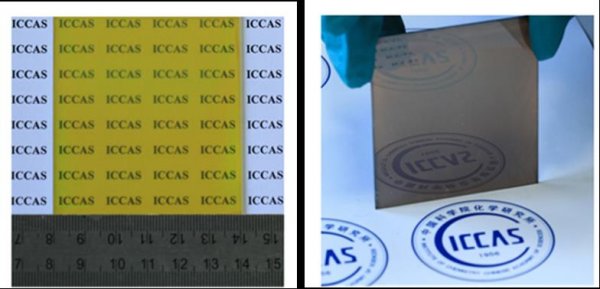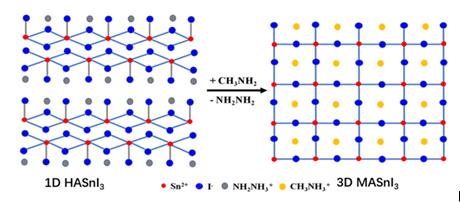In recent years, lead-based organic / inorganic hybrid perovskite materials have received great attention and become the hotspot of solar cell research. Its highest photoelectric conversion efficiency has reached 23%. However, due to the high crystallinity of these materials, it is difficult to control the nucleation and crystallization of perovskite films using conventional solution coating methods and common perovskite precursors, resulting in low film coverage and photovoltaic device performance Poor repeatability may restrict its further promotion and application.
With the support of the National Natural Science Foundation of China, researchers from the Key Laboratory of Green Printing of the Institute of Chemistry, Chinese Academy of Sciences, based on the preliminary research on dye-sensitized solar cells (Angew. Chem. Int. Ed. 2012, 51, 10351-10354), In view of the current problems in the coating of perovskite solutions, the solid-gas reaction method is used to prepare high-quality perovskite films through organic cation exchange (Figure 1), and the performance of photovoltaic devices has been significantly improved (Adv. Mater. 2018, 30, 1804454, J. Mater. Chem. A, 2018, 6, 17867–17873).
Recently, the research team realized the transformation from one-dimensional HAPbI3 (HA = N2H4 +) to three-dimensional non-lead tin-perovskite MASnI3 (MA = CH3NH3 +) through solid-gas reaction. Since this one-dimensional perovskite precursor has good film-forming properties, the three-dimensional perovskite film after solid-gas reaction has a good coverage on the titanium dioxide substrate. More importantly, during the cation replacement process, the hydrazine gas generated by the internal replacement can effectively reduce the in-situ tetravalent tin in the film, significantly reducing the carrier concentration in the film, thereby improving the photogenerated carrier transport . Using this tin perovskite film as the light absorbing layer, the photoelectric conversion efficiency of a perovskite cell with a typical titania mesoporous structure under a standard sunlight reaches 7.13% (Angew. Chem. Int. Ed. 2019, DOI : 10.1002 / anie.201902418). The first author of the above paper is Li Fengzhu, a joint graduate student, and the communication contacts are associate researcher Jiang Kejian and researcher Song Yanlin.

Figure 1 Perovskite (CH3CH2CH2NH3PbI3, left) before conversion and perovskite (CH3NH3PbI3, right) film after conversion

Figure 2 From 1D to 3D-solid gas reaction to prepare tin perovskite (CH3NH3PbI3) thin film
concentric reducer: the center of the size is on the same line. forming process: suppress necking, expanding suppress or necking plus expanding repression. some sizes can also be stamping. Forming process: suppress necking, expanding suppress or necking plus expanding repression, stamping.
Product Name:Concentric Reducers
Size:DN10-DN2500
Materials: A234 WBP-WP1-WP12-WP11, A403 WP 304-304L-316-316L, A402 WPL3-WPL 6,A860 WPHY 42-46-52-60-65-70,PG370,C20
Thickness: 2mm-100mm
Standard:GB/ANSI/ GOST/ JIS/ DIN
Crafts: Cold extrusion, Thermoforming.
Connection: Welding
Package: Wooden boxes,Wooden pallets,According to customer requirements.
Brand Name: HY
Place of Origin: China (Mainland)
Certification: ISO.UKS.SGS.BV
Application: Chemical, Water, Oil and gas, Electricity

Concentric Reducers,Carbon Steel Concentric Reducer,Double Flanged Concentric Reducer,Pipe Reducer
CANGZHOU HAOYUAN PIPE FITTINGS MFG CO.,LTD , https://www.pipefitting-china.com